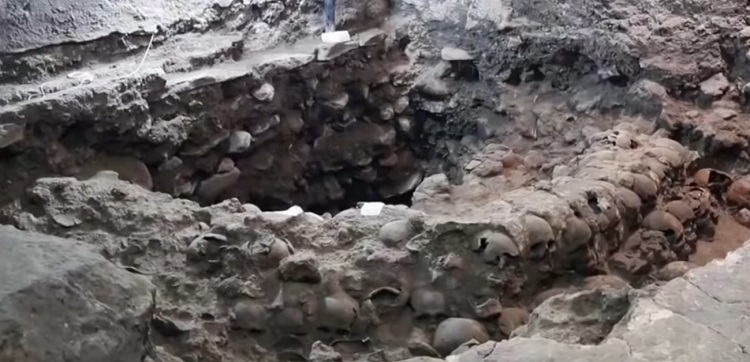Officials reported that archaeologists excavating a site in Mexico uncovered ancient skulls and bones arranged in a stacked manner, providing insight into funeral practices of the region and era.
The findings occurred in Pozo de Ibarra, a small town located in the state of Jalisco.
Personnel from the National Institute of Anthropology and History (INAH), a governmental entity, were monitoring the construction of a sanitary sewage network to safeguard any potential cultural artifacts, as stated in an INAH news release.
During the course of their work, archaeologists unearthed a funerary arrangement wherein various bones were meticulously organized.
Notably, long bones such as tibias and femurs were positioned in one section of the site, while skulls were found in another area, with some stacked atop each other.
INAH Discovers Intact Male Skulls with Cranial Modification

The National Institute of Anthropology and History (INAH) reported the discovery of at least seven intact skulls, all likely belonging to male individuals, with varying ages and evidence of cranial modification, a social custom aimed at altering the shape of the skull for aesthetic reasons.
According to the INAH, researchers concluded that the bones were arranged in these patterns post-skeletonization, indicating a “complex funerary system.”
Additionally, all the bones were interred simultaneously.
While the reason for this burial method remains unclear, the INAH noted the absence of precedents for such funerary practices.
The department suggested the possibility that the seven individuals could have been members of a single family, buried as part of a settlement founding ritual.
The observed practices may be traced back to the Amapa cultural era, spanning from 500 AD to 800 or 850 AD.
Analysis of ceramic vessels and figurines recovered from the site has aided in establishing the probable timeframe of its construction.
The INAH affirmed its commitment to safeguarding and conserving the remains for further investigation and research.
